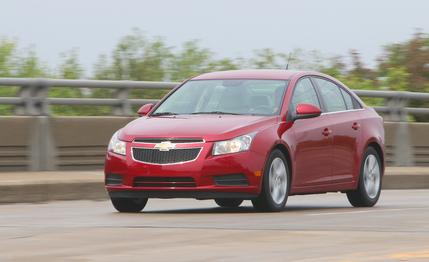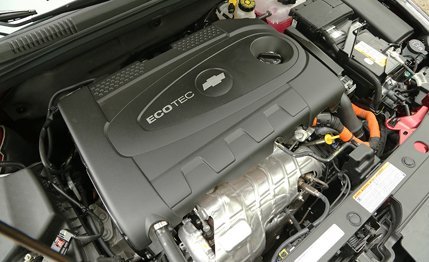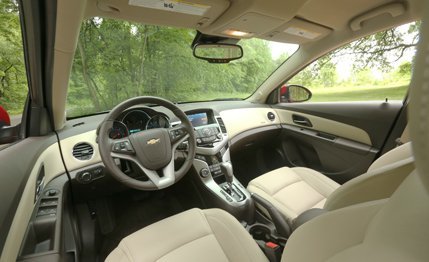 First Drive Review
First Drive Review
Modern advances in clean-burning diesel technology have well and truly nailed the coffin lid shut on automotive terms such as "smoky diesel," "stinky diesel," and, yes, even "Oldsmobile and Chevette diesel." Ill-performing diesel cars rushed to market in the late 1970s and early 1980s in response to the first energy crisis might have left the car-buying public with a bad aftertaste, but a succession of well-regarded turbo-diesels—mostly from German automakers—in recent years has greatly improved prospects. Now with fuel prices climbing and government fuel-economy mandates on the rise, General Motors has an oil-burning version of the Chevy Cruze it wants to show you.
Chevrolet's turbo-diesel four-cylinder was conceived in Torino, Italy, and is created in Kaiserslautern, Germany, but it has been educated in the U.S. It's not a new engine, being already used in Opel Astras and various other GM vehicles around the world at a rate of 400,000 annually. Still, the U.S. version is unique, thanks to the varied driving conditions found in North America: 120-degree Fahrenheit Death Valley summer heat, minus-40-degree northern-Minnesota winters, and 14,000-foot Colorado mountain passes. And U.S. emissions rules require more tweaks, such as higher levels of exhaust-gas recirculation, and different exhaust after-treatment hardware.

A Little Dab’ll Do Ya
Chevy engineers opted for a system essentially downsized from the Duramax pickup diesel engines, using a particulate filter plus urea injection to trim oxides of nitrogen. The 4.5-gallon urea tank is located under the trunk floor where the spare tire used to live (Chevy supplies a can of fix-a-flat instead). In normal driving, a tankful of urea should last 10,000 miles—topping off the urea is recommended when the Cruze gets its scheduled oil changes every 7500 miles.
The foundation of the Cruze diesel is the Euro-standard iron-block, aluminum-head four-cylinder with a steel crankshaft and aluminum pistons with a compression ratio of 16.5:1. The diesel juice is piped in at just over 23,000 psi via the common fuel rail and piezo injectors. Although torque peaks at 264 lb-ft at 2600 rpm, 250 lb-ft is available from 1750 to 3000 rpm, and a boot on the pedal brings 280 lb-ft of overboost for up to 10 seconds—the diesel version of IndyCar's “push to pass.” A six-speed automatic is the only available transmission.

The sharp-eyed might notice the 17-inch aluminum wheels and low-rolling-resistance tires, but there's not much to visually set the diesel apart from other Cruzes. Tough to see are aero bits, mostly picked up from the Cruze Eco, such as the grille opening and shutters, underbody aero panels, and new engine-compartment baffling. The heaviest nondiesel Cruze LTZ we’ve weighed comes in at 3208 pounds, and the 300-or-so-pound additional heft of the diesel kicks it to an estimated 3500 pounds, which calls for other changes, slightly bigger brakes being one. There's added sound isolation, such as a different dash mat and hood blanket that help keep diesel rattle from reaching the cabin.